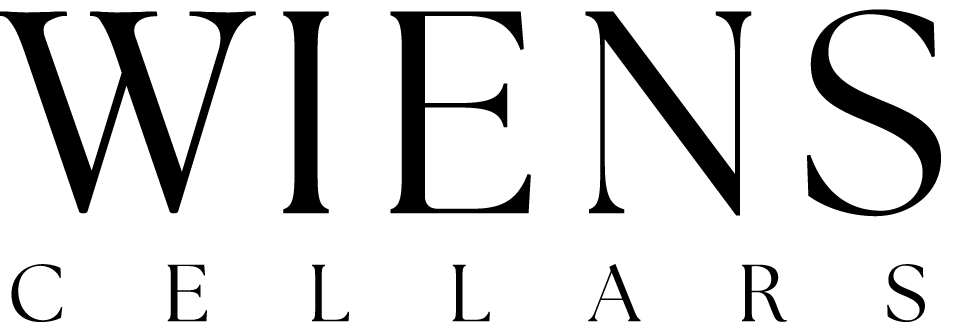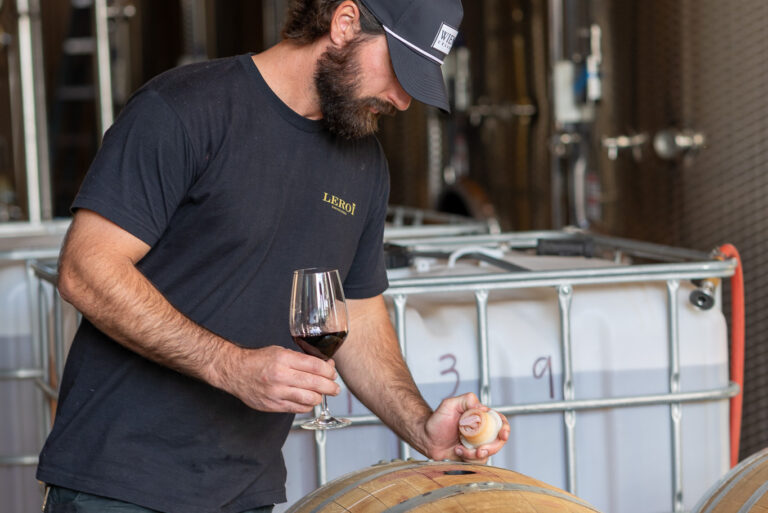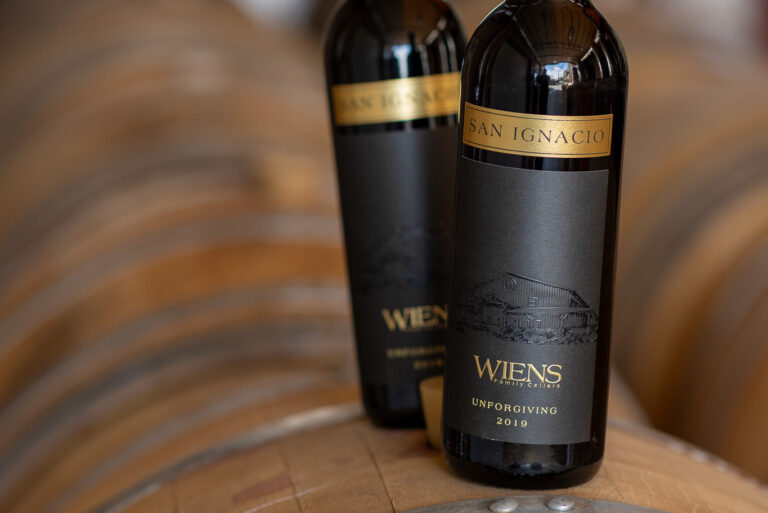The world of wine is a rich tapestry of flavors, aromas, and stories, and at the heart of this intricate tapestry are the discerning voices of wine critics. Beyond being mere evaluators, these critics are tastemakers and storytellers, weaving narratives that breathe life into each bottle. In this exploration, we embark on a journey through the annals of wine criticism, tracing its origins and growth. From the early days when few voices held sway to the present, where a cacophony of opinions converges, we unravel the historical roots that have shaped wine criticism into the influential force it is today.
As we navigate through this multifaceted realm, we uncover the symbiotic relationship between critics, wineries, and the passionate community of wine enthusiasts. The insights and recommendations provided by critics serve as signposts, guiding both seasoned connoisseurs and eager novices through the vast vineyards of choices. But this relationship is not one-dimensional; it’s a dynamic interplay where critics influence not only what we drink but also how wines are crafted.
The landscape has evolved from an era when a handful of critics held the authoritative pen to today’s diverse ecosystem where digital platforms, blogs, and social media amplify a myriad of voices. This evolution has not only democratized the conversation but has also introduced new challenges and opportunities. With this backdrop, we set out to unravel the complexities and nuances that define wine criticism in our contemporary age. The journey promises to be enlightening, offering a deeper understanding of the forces that shape our glasses and, in turn, our experiences with this ancient elixir.
The Power of Ratings
How ratings influence consumer choices
Wine ratings, akin to a compass in a vast sea of options, wield significant influence over consumer choices. As critics meticulously assess and assign scores to wines, consumers often turn to these ratings for guidance, seeking assurance in their selections. The psychology behind this influence lies in the trust that consumers place in the expertise and refined palates of these critics. High ratings can spark curiosity, prompting individuals to explore new vintages and varietals they might have otherwise overlooked.
The impact goes beyond a mere suggestion; it transforms into a powerful driver of consumer behavior. A highly-rated wine becomes a coveted gem, a bottle not just purchased but experienced. This phenomenon creates a ripple effect within the market, as consumers navigate through wine aisles or scroll through online catalogs with a discerning eye, often gravitating towards those bottles adorned with accolades.
Impact on wine prices and market trends
The influence of ratings extends beyond individual purchasing decisions to shape broader market dynamics. Wineries bask in the glow of high ratings, witnessing increased demand and, consequently, the potential for elevated pricing. As a wine attains critical acclaim, it transcends the realm of a mere beverage; it becomes an investment, a collector’s item, or a centerpiece for special occasions.
Market trends dance to the tune of these critical assessments. A surge in demand for wines with high ratings can lead to shifts in production focus, as wineries strive to meet the preferences of a discerning audience. Conversely, a lower-rated vintage might prompt reflection and adaptation in winemaking practices to align with evolving consumer expectations.
In this intricate dance between ratings, consumers, and market trends, the power dynamics are palpable. The influence of ratings isn’t just a singular moment of decision at the shelf; it’s a force that ripples through the entire wine industry, shaping trends, setting benchmarks, and defining the narrative of each vintage.
Prominent Wine Critics and Publications
Profiles of Influential Wine Critics
Behind every influential wine rating, there is a discerning critic with a seasoned palate and a unique perspective. Let’s delve into the profiles of some prominent figures who have left an indelible mark on the world of wine criticism:
- Robert Parker: Renowned for his influential “Parker Points,” Robert Parker revolutionized wine criticism with his numerical rating system. His palate and opinions shaped consumer preferences globally, making him a key figure in the industry.
- Jancis Robinson: A distinguished Master of Wine and prolific author, Jancis Robinson has been a beacon of wine knowledge and expertise. Her comprehensive approach to wine tasting and eloquent critiques have earned her a place among the most respected voices in the field.
- James Suckling: With a long tenure at Wine Spectator, James Suckling has become a prominent critic, known for his global perspective. His reviews often include detailed tasting notes, providing enthusiasts with valuable insights.
Overview of Key Wine Publications and Rating Systems
In addition to individual critics, several publications and rating systems wield considerable influence in the world of wine. Understanding these platforms is essential for navigating the complex landscape of wine ratings:
- Wine Spectator: A venerable publication, Wine Spectator combines expert reviews with features on winemaking, regions, and trends. Their 100-point rating system is widely recognized and trusted.
- Wine Advocate: Founded by Robert Parker, the Wine Advocate employs a numerical rating system to assess wines. Known for its in-depth reviews, it has a significant impact on consumer choices and market trends.
- Decanter: As a leading wine magazine, Decanter offers a diverse range of wine critiques and articles. Its panel tastings and ratings contribute to shaping opinions in the wine community.
Understanding the profiles of these influential critics and the platforms they contribute to provides wine enthusiasts and producers with valuable insights into the diverse world of wine criticism.
The Rating Process
Criteria Used in Wine Evaluation
Wine evaluation involves a meticulous examination of various elements that contribute to a wine’s overall quality and character. The criteria employed by wine critics are instrumental in providing a comprehensive understanding of a particular vintage. Key aspects include:
- Appearance: Critics evaluate the wine’s color, clarity, and viscosity. These visual cues can offer insights into the grape variety, winemaking process, and potential aging.
- Aroma and Bouquet: The aromatic profile is critical in wine assessment. Critics analyze the intensity, complexity, and balance of aromas, which can range from fruity and floral to spicy and oaky.
- Flavor: Tasting plays a pivotal role, focusing on the primary flavors derived from the grape, secondary notes from fermentation and aging, and tertiary characteristics developed during maturation.
- Structure: This criterion assesses the wine’s backbone, including acidity, tannins, and alcohol levels. A well-balanced structure is indicative of a wine’s aging potential and overall harmony.
- Finish: The lingering impression a wine leaves on the palate, known as the finish, is carefully considered. A long, satisfying finish is often associated with higher-quality wines.
The Methodology Behind Scoring Wines
Assigning a numerical score to a wine is a systematic process that aims to quantify its quality. While the exact methodology can vary among critics and publications, a general approach involves:
- Tasting Blind: Many critics taste wines blind, meaning they are unaware of the producer or vintage. This approach eliminates biases and ensures an objective evaluation solely based on the wine’s merits.
- Point System: Critics often use a point-based scoring system, with 100 points being a common scale. Wines are rated based on appearance, aroma, flavor, structure, and overall impression. Higher scores denote superior quality.
- Consistency: Critics maintain consistency in their scoring, allowing consumers to rely on a certain critic’s preferences and judgments. This consistency builds trust and credibility in the eyes of the wine community.
- Written Reviews: In addition to numerical scores, critics provide detailed written reviews. These notes delve into specific characteristics, offering consumers a qualitative understanding of the wine beyond the numerical rating.
Understanding the meticulous criteria and methodology employed in the rating process provides wine enthusiasts and producers with insights into how a critic arrives at their assessments, fostering a deeper appreciation for the intricacies of wine evaluation.
Controversies and Criticisms
Debates Over the Objectivity of Ratings
The objectivity of wine ratings has been a longstanding subject of debate within the industry. Critics, despite their expertise, are not immune to individual preferences, and this subjectivity can influence their evaluations. Several aspects contribute to these debates:
- Personal Taste: Critics, like any enthusiast, have personal preferences that can affect their ratings. A wine they find exceptional might not resonate similarly with others, leading to discrepancies in perceived quality.
- Inherent Bias: External factors, such as relationships with winemakers or regions, can introduce bias. Critics may unintentionally favor certain styles or producers, impacting the impartiality of their assessments.
- Changing Palates: Critics’ palates evolve over time, reflecting changing trends and personal growth. What they appreciated in the past might not align with contemporary tastes, raising questions about the relevance of older ratings.
The Influence of Critics on Winemaking Styles
Wine critics wield substantial influence over consumer perceptions, and this influence often extends to winemaking practices. Wineries may adjust their styles to align with the preferences of influential critics, leading to:
- Homogenization: In an attempt to secure positive reviews, winemakers may tailor their wines to conform to popular styles. This can result in a certain level of homogenization within the industry, where wines may share similar characteristics to please critics.
- Risk Aversion: Fear of negative reviews may lead winemakers to adopt safer, more conventional approaches, stifling experimentation and innovation. This influence can impact the diversity and creativity within the world of winemaking.
- Emergence of Critic Favorites: Wines highly praised by influential critics often experience increased demand and higher prices. Winemakers may be inclined to produce wines that align with these preferences to gain visibility and market share.
While critics undoubtedly contribute valuable insights, the potential subjectivity and influence on winemaking decisions underscore the importance of considering multiple perspectives when navigating the diverse world of wines. Critics should be seen as guides rather than arbiters, allowing consumers to make informed choices based on their unique preferences.
The Effect of Ratings on Wineries
How High Ratings Can Transform a Winery’s Reputation
High ratings from influential wine critics can wield transformative power over a winery’s reputation. The impact extends beyond immediate sales, influencing various facets that contribute to long-term success:
- Increased Visibility: Positive ratings elevate a winery’s visibility within the industry, attracting attention from consumers, distributors, and other key players. This heightened profile can open doors to new markets and opportunities.
- Enhanced Credibility: Well-regarded ratings enhance a winery’s credibility, establishing it as a producer of exceptional wines. This credibility can translate into stronger relationships with distributors, retailers, and even collaborations with other esteemed producers.
- Boost in Sales and Demand: Perhaps most directly, high ratings often correlate with increased consumer demand. The perceived quality of highly-rated wines encourages purchases, contributing to higher sales and potentially allowing the winery to command premium prices.
- Tourism and Wine Tourism: Wineries with high ratings often become destinations for wine enthusiasts. The positive association draws visitors eager to experience the acclaimed wines firsthand, contributing to wine tourism and bolstering the winery’s local and regional reputation.
Challenges for Wineries in Managing Critic Expectations
While positive ratings bring numerous benefits, wineries also face challenges in managing expectations and maintaining consistency:
- Pressure to Replicate Success: Following a highly-rated release, wineries may feel pressure to replicate that success with subsequent vintages. This pressure can lead to challenges in consistently achieving the same level of quality, given the variability in growing conditions from year to year.
- Balancing Innovation and Expectations: Winemakers may grapple with striking a balance between meeting consumer expectations, often shaped by critical acclaim, and pursuing innovative winemaking techniques. The desire to maintain a recognized style can sometimes hinder experimentation.
- Mitigating the Impact of Negative Ratings: On the flip side, negative ratings or critical reviews can pose challenges. Wineries must navigate strategies to address and overcome less favorable assessments, emphasizing resilience and adaptability in the face of diverse opinions.
In essence, the effects of ratings on wineries are nuanced, requiring a delicate balance between leveraging the benefits and navigating the challenges to ensure sustained success and growth in the competitive world of wine.
Beyond the Score: Understanding Wine Critiques
Interpreting Tasting Notes and Scores
Wine enthusiasts often encounter detailed tasting notes and numerical scores from critics, providing insights into a wine’s characteristics and quality. Interpreting these assessments requires a nuanced understanding of the following key aspects:
- Flavor Descriptions: Tasting notes delve into the intricate flavors of a wine, describing the nuances of fruit, floral, herbal, and other elements. Enthusiasts can learn to identify these flavors, enhancing their appreciation of the wine’s complexity.
- Structural Components: Critics often comment on a wine’s structure, including factors like acidity, tannins, and body. Learning to interpret these elements helps consumers gauge a wine’s aging potential and suitability for different occasions.
- Terroir Expression: Tasting notes may highlight a wine’s connection to its terroir—the unique combination of soil, climate, and vineyard practices. Understanding terroir expression adds a layer of appreciation, connecting the drinker to the wine’s sense of place.
- Balance and Harmony: Critics assess how well a wine achieves balance among its various components. Recognizing this balance contributes to a consumer’s ability to select wines that align with their personal preferences.
The Importance of Personal Taste Preferences
While wine critiques offer valuable guidance, the significance of personal taste cannot be overstated. Each individual’s palate is unique, influenced by experiences, preferences, and cultural factors. Consider the following aspects when navigating the realm of personal taste preferences:
- Experimentation: Embracing a diverse range of wines allows enthusiasts to explore different styles, varietals, and regions. This experimentation aids in identifying specific characteristics and styles that resonate personally.
- Open-mindedness: Wine appreciation is subjective, and personal preferences can evolve over time. Remaining open-minded to new experiences and flavors enhances the journey of discovering wines that bring the most enjoyment.
- Context Matters: The context in which a wine is enjoyed—whether with food, during a celebration, or in a relaxed setting—affects the overall experience. Considering the context alongside personal preferences enriches the enjoyment of wine.
- Developing a Personal Vocabulary: Building a vocabulary to articulate personal preferences enables enthusiasts to communicate effectively about wines. This self-awareness contributes to more intentional selections and a deeper connection to the world of wine.
In summary, beyond scores and tasting notes, understanding wine critiques involves a thoughtful consideration of personal taste preferences. By navigating the intricacies of flavor interpretation and embracing individual preferences, wine enthusiasts can embark on a more fulfilling and personalized journey in the world of wine appreciation.
The Digital Age and Wine Criticism
The Rise of Online Wine Communities and Bloggers
The advent of the digital age has ushered in a democratization of wine criticism, with online platforms and passionate bloggers playing a significant role in shaping the narrative of wine appreciation. Key aspects of this transformation include:
- Diverse Perspectives: Online wine communities and bloggers bring diverse perspectives and voices to the forefront. Enthusiasts now have access to a wealth of opinions, spanning from seasoned experts to everyday wine lovers, fostering a more inclusive and varied dialogue.
- Real-Time Interactions: Unlike traditional print media, online platforms offer real-time interactions. Wine enthusiasts can engage in discussions, seek recommendations, and share their experiences instantaneously, creating a dynamic and interactive space for wine-related conversations.
- Accessibility of Information: The internet has made wine information more accessible than ever before. Online communities and bloggers contribute to a vast repository of knowledge, offering insights into different wine regions, varietals, and winemaking techniques, enriching the learning experience for consumers.
- Exploration of Niche Topics: Bloggers often delve into niche topics, exploring specific regions, grape varieties, or winemaking practices. This niche focus allows enthusiasts to deep-dive into areas of particular interest, expanding their understanding and appreciation of the vast world of wine.
How Social Media is Changing Wine Criticism
Social media platforms have become influential channels for wine criticism, shaping trends, and amplifying the reach of recommendations. The impact of social media on wine criticism is characterized by:
- Visual Storytelling: Platforms like Instagram have become visual hubs for wine enthusiasts, allowing them to share visually appealing content about their wine experiences. This visual storytelling enhances the aesthetic appeal of wine, creating an immersive and engaging narrative.
- Influencer Culture: Wine influencers on social media platforms can sway consumer preferences and trends. Their recommendations and reviews often reach a broad audience, influencing purchasing decisions and introducing consumers to new and exciting wines.
- Crowdsourced Recommendations: Social media facilitates crowdsourced recommendations, where users share their favorite wines and experiences. This collective wisdom provides a valuable resource for enthusiasts seeking peer-reviewed suggestions and insights.
- Virtual Tastings and Events: Social media platforms enable the organization of virtual tastings and events, fostering a sense of community among wine enthusiasts. These online gatherings create opportunities for shared experiences, discussions, and the exploration of different wines.
The digital age has not only expanded the reach of wine criticism but has also empowered wine lovers to actively participate in and contribute to the evolving discourse. Online communities and social media platforms continue to shape the landscape of wine appreciation, offering a dynamic and interactive space for enthusiasts to connect, learn, and share their love for wine.
The Future of Wine Ratings
Emerging Trends and Potential Changes in Wine Criticism
The landscape of wine criticism is poised for continuous evolution, marked by emerging trends that reflect the changing dynamics of the industry. Some notable trends and potential changes include:
- Incorporation of AI and Data Analytics: The integration of artificial intelligence (AI) and advanced data analytics is likely to play a more significant role in wine criticism. Predictive modeling and machine learning algorithms could provide deeper insights into consumer preferences, helping critics anticipate trends and tailor recommendations.
- Interactive and Immersive Experiences: As technology advances, there’s a growing trend toward more interactive and immersive experiences in wine criticism. Virtual reality (VR) and augmented reality (AR) applications may offer consumers virtual vineyard tours, immersive tasting experiences, and personalized recommendations based on individual preferences.
- Global Collaboration and Cross-Cultural Criticism: With the ease of global communication, wine criticism is becoming more inclusive and collaborative. Critics from different parts of the world can collaborate, offering diverse perspectives and insights into wines from various regions. This globalized approach contributes to a more comprehensive understanding of the wine world.
- Sustainability and Ethical Practices: There is a growing emphasis on sustainability and ethical practices in the wine industry. Future wine criticism may place increased importance on a winery’s commitment to environmentally friendly and socially responsible practices. Critics may evaluate not only the quality of the wine but also the sustainability of its production.
The Evolving Relationship Between Wineries, Critics, and Consumers
The future of wine ratings will likely witness shifts in the dynamics between wineries, critics, and consumers, leading to a more interconnected and transparent relationship:
- Direct-to-Consumer Engagement: Wineries are increasingly engaging directly with consumers through online platforms and social media. This direct interaction allows winemakers to share their stories, production processes, and the unique aspects of their wines, fostering a deeper connection with consumers.
- Consumer-Centric Ratings: The future may see a shift toward more consumer-centric ratings, where the preferences and opinions of everyday wine enthusiasts play a more significant role. Platforms that encourage user-generated content, reviews, and ratings could become influential in shaping consumer choices.
- Transparency in Critic Evaluations: Critics and publications may embrace greater transparency in their evaluation processes. This could involve providing more information about the criteria used for ratings, the context of tastings, and the personal preferences of critics. Transparency enhances credibility and helps consumers make more informed decisions.
- Collaborative Initiatives: Wineries, critics, and consumers may collaborate more closely on initiatives related to sustainability, wine education, and community engagement. Joint efforts could contribute to a more holistic and mutually beneficial ecosystem within the wine industry.
The future of wine ratings holds exciting possibilities, driven by technological advancements, changing consumer behaviors, and an increased focus on sustainability. As the dynamics continue to evolve, the relationship between wineries, critics, and consumers will likely become more interconnected, fostering a rich and dynamic wine culture.
The Enduring Significance of Wine Critics
Wine critics, with their discerning palates and experienced insights, continue to wield considerable influence within the intricate tapestry of the wine industry. Their enduring significance lies not only in guiding consumers toward exceptional wines but also in shaping trends, promoting quality, and fostering a culture of appreciation. While the landscape of wine criticism evolves, the expertise and passion of critics remain instrumental in elevating the overall wine experience.
As consumers navigate the vast world of wine ratings, it becomes imperative to approach them with a discerning and open-minded perspective. While ratings offer valuable guidance, they are but one facet of the multifaceted wine journey. A balanced view involves considering personal preferences, exploring diverse tasting experiences, and embracing the diversity that makes the wine world so captivating.
In the grand symphony of wine, where each bottle tells a unique story, a balanced view acknowledges the subjectivity inherent in taste. It encourages enthusiasts to embark on their own explorations, savoring the nuances of different varietals, regions, and winemaking styles. Ultimately, the essence of wine lies not solely in the digits assigned by critics but in the personal connection forged with each sip, creating a tapestry of memories and enjoyment that transcends numerical evaluations.
In the ever-evolving world of wine, let the enduring significance of critics be a guiding light, but may it be complemented by the individual journey of discovery, the joy of exploration, and the celebration of diverse tastes. Cheers to a future where wine ratings and personal experiences harmoniously coexist, enhancing the rich tapestry of the global wine community.



